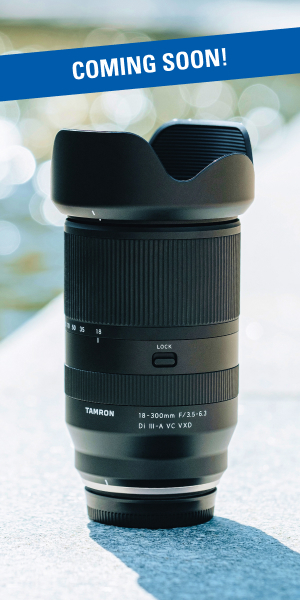As the air begins to turn crisp and leaves transform into a show of reds, oranges, and yellows, fall presents an unparalleled opportunity for landscape photography. The vibrant hues of autumn create stunning visual appeal, making it a favorite season for photographers. Capturing the essence of fall through fall color photography not only showcases nature’s beauty but also allows photographers to experiment with various techniques and settings to create breathtaking images.
What You’ll Learn in This Article:
- Fall offers unparalleled opportunities for landscape photography with its vibrant colors and crisp air.
- Renowned locations for fall color photography include New England, the Great Smoky Mountains, and the Canadian Rockies.
- Adjusting white balance to “cloudy” or “shade” and using low ISO settings can enhance the vivid colors of fall foliage.
- Composition techniques like the rule of thirds and leading lines can enhance the natural beauty of fall landscapes.
- Exploring different locations and experimenting with techniques can help capture the unique charm of the autumn season.
Best Locations for Fall Colors Photography
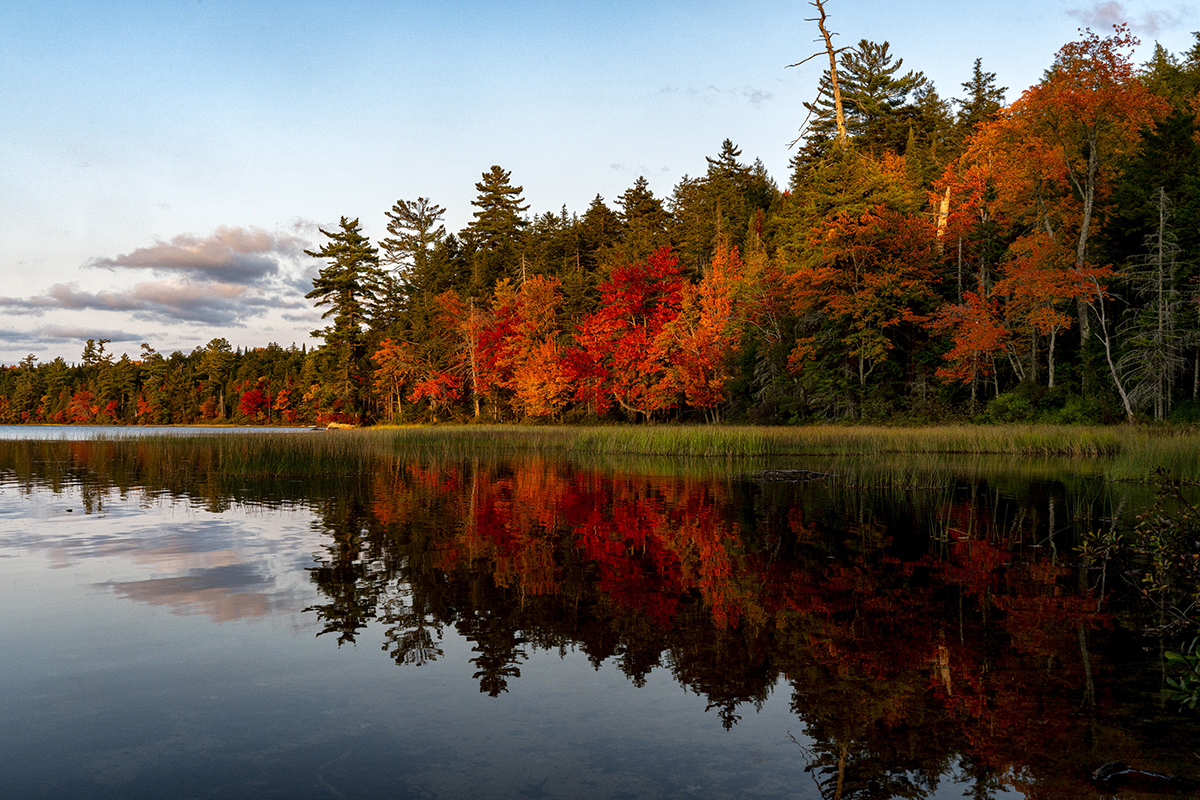
Finding the right location is key to successful fall color photography. Here are some renowned spots and hidden gems where fall colors are particularly breathtaking:
Renowned Locations
- New England, USA: Known for its picturesque historic towns and rolling hills, New England offers some of the most vibrant fall foliage. Places like Vermont, New Hampshire, and Maine are famous for their spectacular autumn colors.
- Great Smoky Mountains, USA: By North Carolina and Tennessee, the Great Smoky Mountains provide a stunning backdrop for landscape photography with their diverse tree species that display a wide range of fall colors.
- Canadian Rockies, Canada: Regions like Banff and Jasper National Parks offer majestic landscapes with vibrant fall colors, making them ideal for fall color photography.
Hidden Gems
- The Ozarks, USA: This region in Missouri and Arkansas offers beautiful, lesser-known spots for capturing fall foliage, with scenic byways and quiet trails.
- Door County, Wisconsin, USA: Known for its charming small towns and coastal views, Door County becomes a riot of colors in the fall, providing numerous opportunities for stunning photos.
- Columbia River Gorge, USA: Located between Oregon and Washington, this area features waterfalls, cliffs, and forests.
Camera Settings and Techniques for Fall Colors Photography
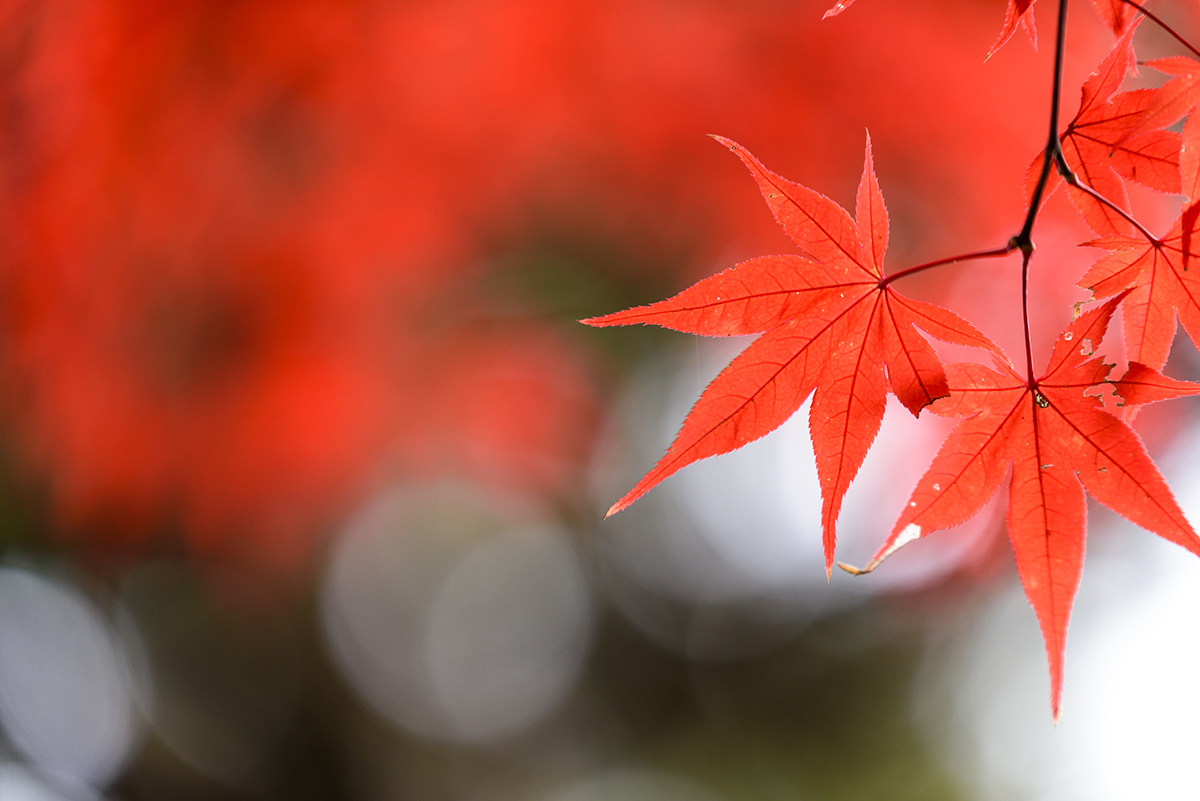
To capture the vivid colors of fall, utilizing the right camera settings is crucial.
Here are some tips:
- White Balance: Adjusting the white balance can help enhance the warm tones of fall foliage. Setting your camera’s white balance to “cloudy” or “shade” can amplify the reds and yellows, making the colors pop more vividly.
- Exposure: Proper exposure is essential in landscape photography. Use a low ISO to reduce noise and increase image quality. Depending on the lighting conditions, you may need to bracket your exposures to ensure you capture the full dynamic range of the scene. You can do this by taking multiple shots at different exposures then blending them in post-processing.
- Aperture: For sharp, detailed landscapes, use a narrow aperture (high f-stop number) such as f/8 to f/16. This increases the depth of field, making sure that both the foreground and background are in sharp focus.
Fall Colors Photography Composition Tips
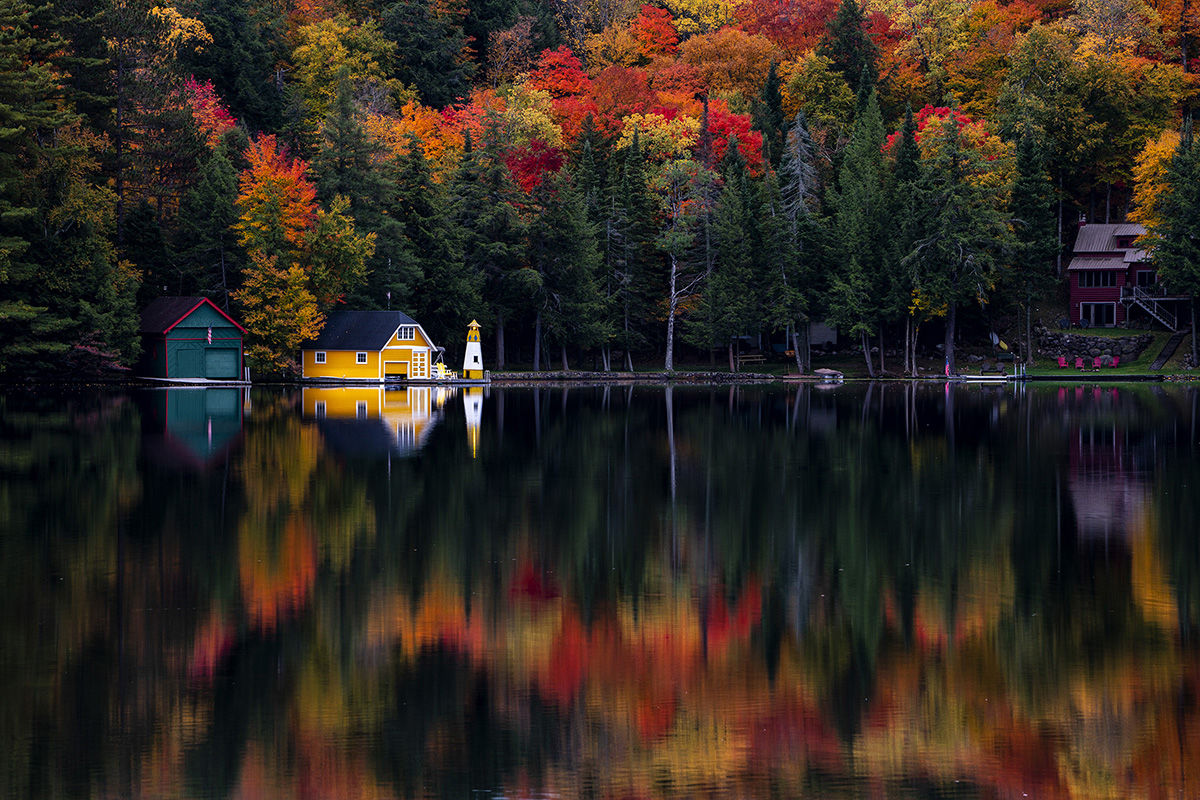
Effective composition techniques can elevate your fall color photography by enhancing the natural beauty of the landscape:
- Rule of Thirds: The rule of thirds is a fundamental principle in photography. Divide your frame into nine equal parts using two horizontal and two vertical lines. Position key elements of your scene along these lines or at their intersections to create a balanced and engaging composition.
- Leading Lines: Leading lines guide the viewer’s eye through the image and can add depth to your photos. Look for natural lines like rivers, paths, or tree branches that draw the viewer’s attention to the focal point of the scene.
- Foreground Interest: Incorporate interesting elements in the foreground to add depth and context to your landscape photos. Rocks, fallen leaves, or a winding trail can provide a sense of scale and make your images more immersive.
Choosing the Right Lens for Fall Colors Photography
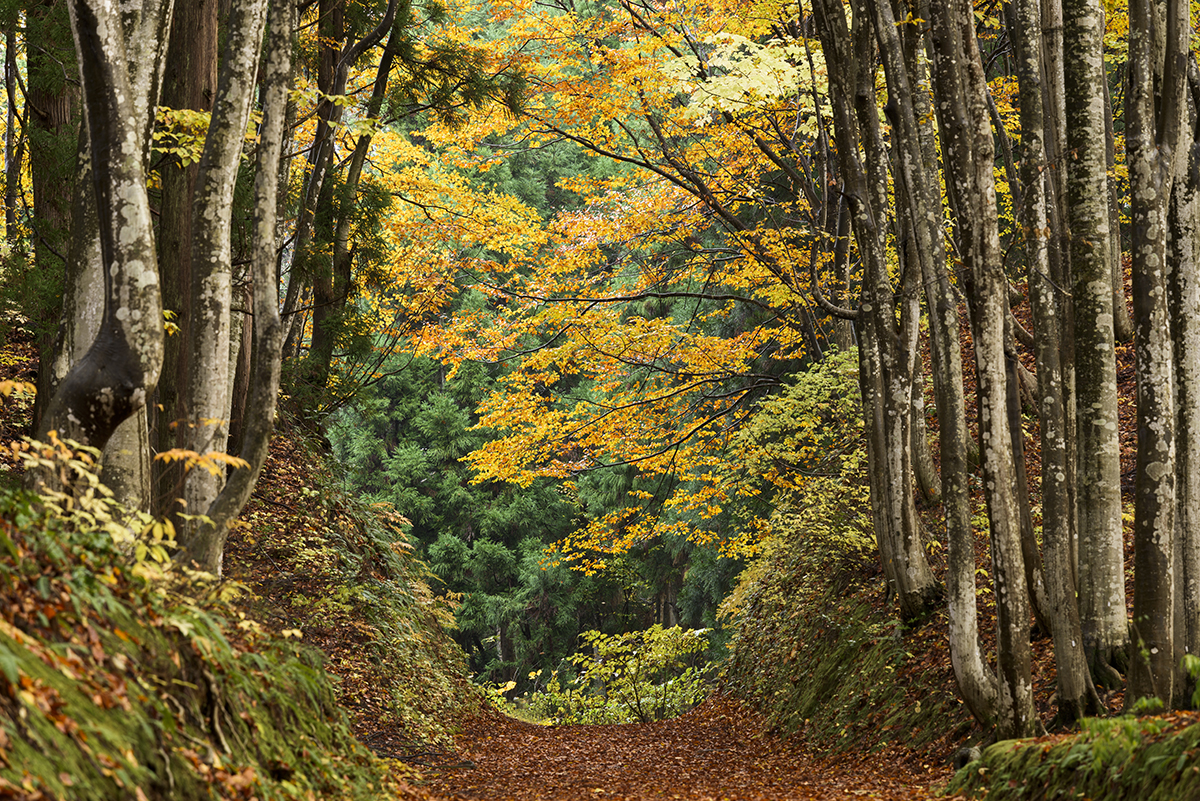
When it comes to fall color photography, choosing the right lens is just as important as selecting the perfect location or camera setting. The lens you use will determine your field of view, image sharpness, and overall creative flexibility—key elements when capturing sweeping autumn vistas or intimate details of foliage.
Wide to Standard Zoom: Tamron 17-50mm F/4 Di III VXD
The Tamron 17-50mm F/4 lens is an excellent choice for general fall landscape photography. With its versatile wide-to-standard zoom range, this lens is ideal for capturing both expansive scenes and more composed, structured shots. The constant F/4 aperture offers excellent control over depth of field while maintaining image clarity throughout the zoom range—perfect for early morning or golden hour shooting.
Ultra-Wide Angle: Tamron 11-20mm F/2.8 Di III-A RXD
For photographers looking to emphasize vast landscapes or include dramatic skies, the Tamron 11-20mm F/2.8 ultra-wide lens delivers exceptional performance. It’s especially suited for dramatic compositions that use foreground elements, like fallen leaves or winding paths, to create depth. Its bright F/2.8 aperture also allows for creative low-light shots, ideal for misty fall mornings or twilight scenes.
All-in-One Versatility: Tamron 18-300mm F/3.5-6.3 Di III-A VC VXD
If you prefer to travel light and avoid switching lenses in the field, the Tamron 18-300mm F/3.5-6.3 all-in-one zoom is a top-tier option. It covers everything from wide-angle landscapes to detailed telephoto shots of distant ridgelines or isolated trees. With Vibration Compensation (VC) and fast autofocus, this lens is perfect for handheld shooting while hiking through colorful trails.
These Tamron lenses not only provide flexibility but also deliver sharp, color-rich images that bring fall foliage to life. Whether you’re photographing wide vistas, close-ups of leaves, or mid-range compositions, there’s a Tamron lens to meet your creative vision.
Best Times and Lighting for Fall Colors Photography
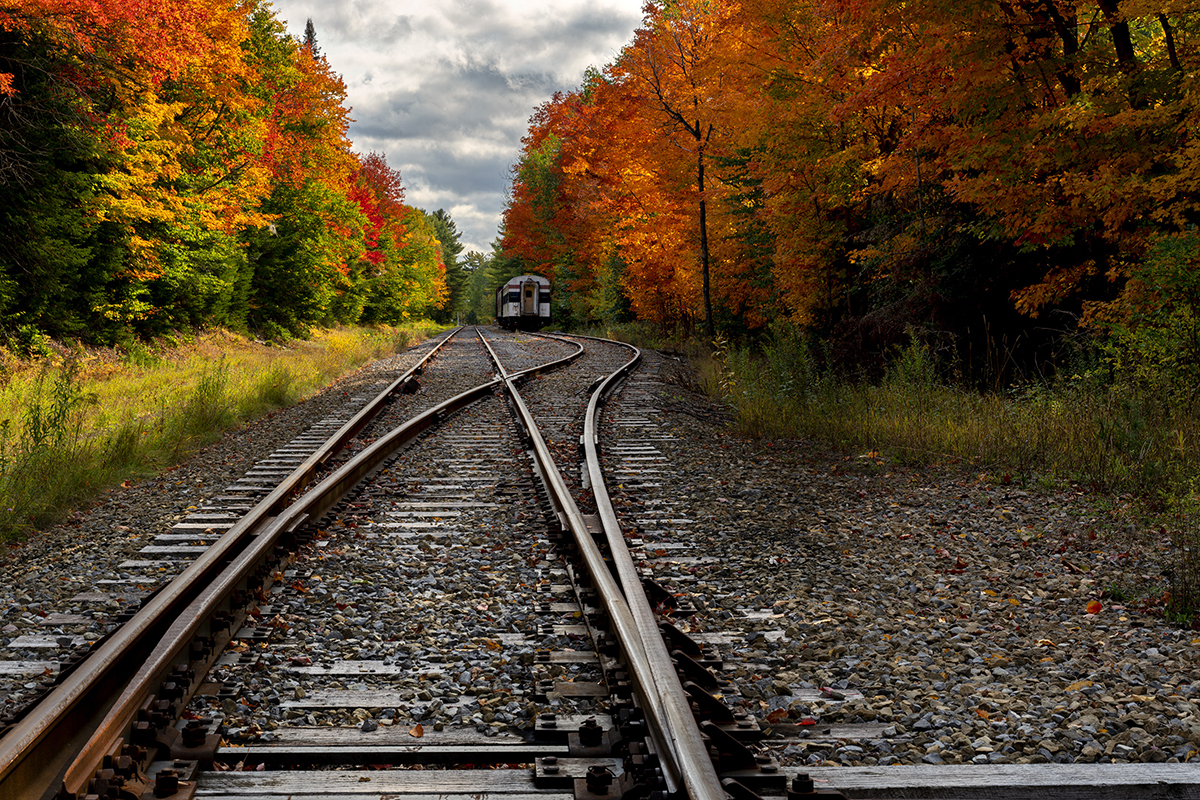
Timing is everything in fall colors photography. Knowing when and how to photograph fall foliage under ideal lighting conditions can dramatically improve the quality and mood of your images. This section focuses on the optimal times of day, seasonal timing, and weather conditions that maximize color saturation and depth.
Golden Hours: Morning and Evening Magic
Photographing during the golden hours—shortly after sunrise and just before sunset—provides warm, directional light that enhances the reds, oranges, and yellows of autumn foliage. The soft, low-angle light also helps minimize harsh shadows and adds a beautiful glow to landscapes, making it a favorite time for fall landscape photography.
Overcast Days: Nature’s Softbox
While bright sunlight can sometimes cause glare or overly contrasty scenes, overcast skies act like a giant softbox. Cloud cover diffuses light evenly, reducing shadows and allowing the rich fall colors to appear more saturated. Overcast days are perfect for capturing subtle tones and details in foliage, especially in forested areas.
Peak Foliage: Timing the Season
To make the most of your fall foliage photography, research the peak color times in your chosen location. Northern regions typically reach peak colors earlier in the season, while southern areas may peak later. Following foliage reports and planning accordingly ensures you’re there when the colors are most vibrant.
Incorporate Weather Effects
Elements like morning fog, mist, and light rain can add depth, atmosphere, and mood to your fall images. Fog softens distant elements and creates a dreamy quality, while raindrops on leaves can add texture and detail in close-up fall photography.
By understanding how lighting and timing impact your images, you’ll gain greater control over the final look and feel of your fall colors photography. Combine these elements with the right lens and thoughtful composition, and you’ll be well-equipped to capture autumn in all its breathtaking beauty.
Final Thoughts on Fall Colors Photography
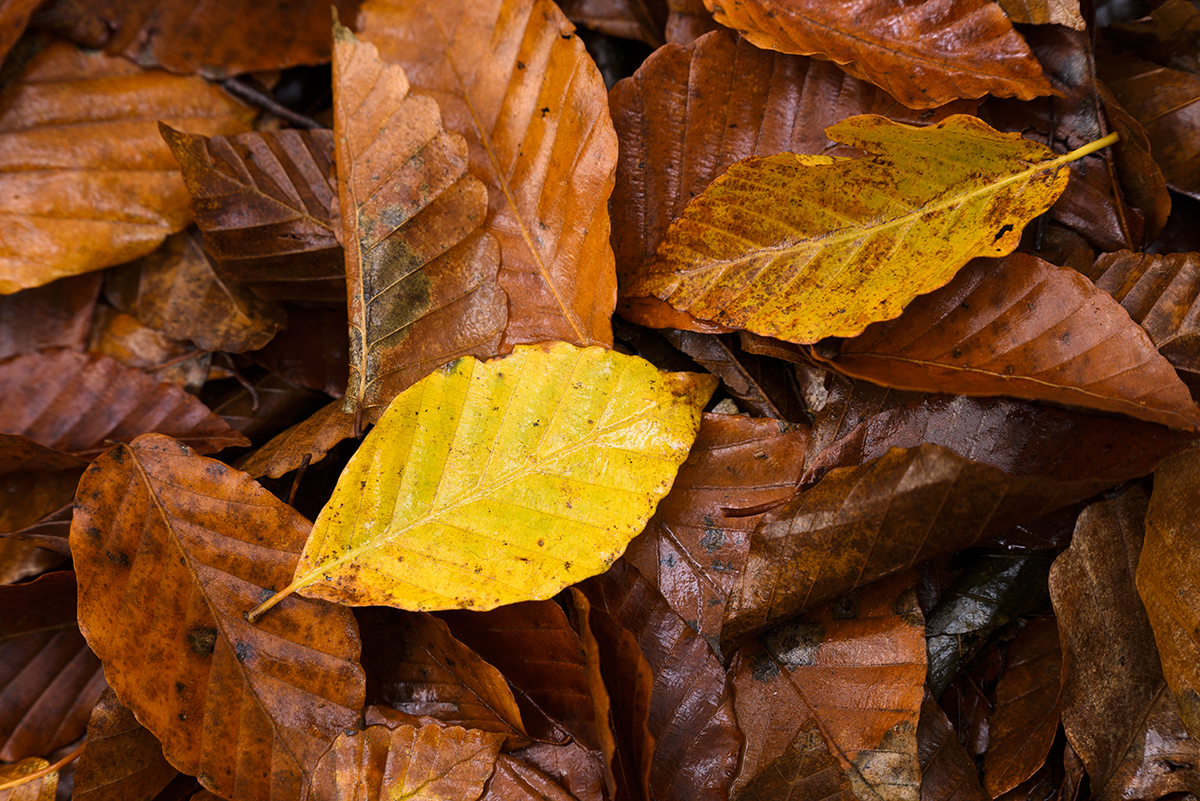
Capturing the essence of fall through landscape photography is a rewarding experience that allows you to document the season’s stunning beauty. By exploring renowned locations and hidden gems, utilizing proper camera settings, and applying effective composition techniques, you can create compelling images that showcase the vibrant colors of autumn. Embrace the joys of fall color photography by venturing out to different locations and experimenting with various techniques to capture the unique charm of this magical season.
Learn about Tamron lenses for Fall Landscape Photography at an authorized Tamron dealer in your area or visit the TAMRON Store today.
More Photo Tips | Watch Videos | Learn More About Tamron Lenses | Photo Gallery
